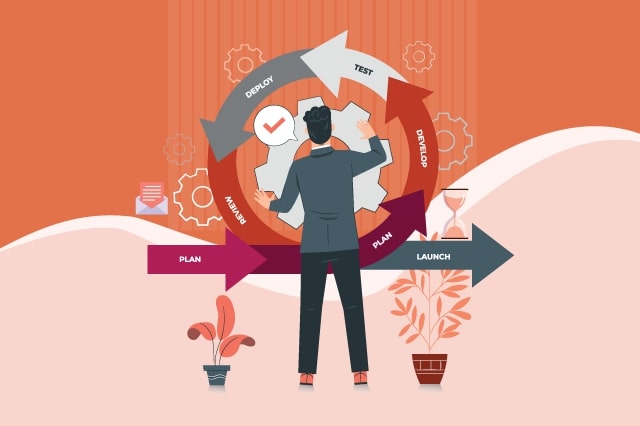
Introduction
With a rapidly transforming job landscape and accelerated pace of tech automation and innovation, the HR team has placed a high premium on upskilling and reskilling to comprehend the essential needs of the workforce. It has become necessary to consistently learn new and additional information to keep up to date with the fast-paced economy and job market. Employers prefer hiring candidates with the adaptability and resilience to thrive in a continually evolving workplace environment.
Developments across industries and technological advancements have changed how we work within the workplace. This article will examine why upskilling and reskilling is so important and the benefits it provides for employees and employers.
What is Upskilling?
Upskilling is an approach to enhancing employees’ skills, enabling them to develop new skills within their current job that will help them achieve to the best of their ability. With the constant emergence of new technologies and the changing face of the workplace post-pandemic, upskilling has become imperative. New skills take precedence, and job requirements vary with technological evolution. As a result, there is an ongoing need to look after employees’ training and development needs.
Upskilling enables employees to bridge skill gaps through continuous professional development. Learning new skills is essential to stay up-to-date with emerging business trends, thus helping organizations stay competitive in the market. For example, a start-up founder might upskill a manager in data analysis for better logistics and inventory planning and data-driven decisions.
Benefits of Upskilling
Upskilling motivates employees to become conscious of their learning and advance their careers. Some of the key benefits of upskilling are as follows:
Progression within existing job role: Employees are competent to have a higher-level skill set and can perform tasks efficiently at work with greater confidence.
Gaining control over workload:If an employee has upskilled on simple and faster ways to complete a task at work, resulting in reduced stress and more time to pursue other interests.
Retain staff and boost motivation: upskilling shows employees that the employer is concerned about their careers and futures. A boost in employee confidence can quickly spread throughout the team, leading every employee to feel more connected.
Stay up to date with technological changes: Employers can take advantage of various technological changes through online resources to reach a wider audience.
Highly competitive work environment: Upskilling encourages employees to improve their work ethics and motivates them to put maximum effort into the given tasks.
What is Reskilling?
Reskilling is an approach to acquiring new skills needed to perform a completely different role. It concentrates on the employee’s requirement to learn a completely new skill set. It equips employees with the required abilities to adapt to new functions and become more versatile. Therefore, organizations need to pivot quickly and reskill for new roles. They can retrain their existing employees to take on new roles, which will keep companies functioning well even during times of change.
Reskilling is not only about saving time and resources, it also ensures that the employees stay motivated, engaged, and eager to develop new skills and expertise that will help the whole organization.
Benefits of Reskilling
There are numerous benefits of reskilling a workforce, both for the employers and for the employees. Some of the key benefits of reskilling are as follows:
Career advancement: By acquiring new skills, individuals can take on more challenging and rewarding roles, leading to career growth and advancement.
Improved employment:Reskilling helps employees stay relevant in a constantly evolving job market, making them more competitive and attractive to employers.
Personal growth: Reskilling provides individuals with the opportunity to learn and grow, leading to increased confidence and a sense of fulfillment.
Career flexibility: Reskilling allows individuals to transition into new roles or industries, offering greater career flexibility and potential for job security.
Keeping up with technology: Technology is constantly changing, and reskilling helps individuals keep pace with these changes and remain proficient in their field.
Difference between Upskilling and Reskilling
Upskilling and reskilling are similar concepts, but they have different definitions and focuses.
Upskilling refers to enhancing or improving existing skills to keep pace with technological advancements and changes in the job market. It involves developing or deepening existing skills to increase job performance and career progression within the same field or industry.
Reskilling, on the other hand, involves acquiring new skills and knowledge in a different field or industry. It is often done in response to changes in the job market, technological advancements, or the need to transition into a new career. Reskilling requires individuals to start from scratch and learn new skills, techniques, and technologies.
In short, upskilling focuses on improving existing skills, while reskilling focuses on acquiring new skills and changing careers.
Best practices of Upskilling and Reskilling
Assess current skills and identify areas for improvement: Conduct a self-assessment to identify strengths and weaknesses and determine which skills need improvement.
Set clear goals:Determine what new skills are required and set clear, achievable goals for acquiring them.
Seek out learning opportunities: Look for training programs, workshops, online courses, or certification programs that align with your goals.
Invest in yourself: Consider investing time and resources into your professional development, such as taking courses or attending conferences.
Network: Connect with professionals in your industry or field of interest to learn about new developments and to stay current.
Seek feedback: Ask for feedback from colleagues, supervisors, or mentors on your strengths and areas for improvement.
Practice and apply new skills:Apply newly acquired skills in the workplace or seek out opportunities for hands-on learning and practical experience.
Stay motivated: Keep a positive attitude and stay motivated through the ups and downs of the learning process.
Celebrate successes: Acknowledge and celebrate your successes, no matter how small, as you work towards your goals.
Conclusion
Today’s talent looks for employers with a dedication to their future career development in a rapidly changing job market. Not only does a career pathing strategy fascinate talent in your organization, but it also improves motivation and retention levels among your employees.
With technological advancements and shifting job demands, continuous learning, and professional development are crucial for individuals to maintain their growth and career success. Upskilling and reskilling enhance their skills, increase their earning potential, and pursue new career paths, leading to personal and professional growth. By investing in their development, individuals can remain at the forefront of their fields and continue to make valuable contributions to their organizations and society.
With the pace of digital transformation continuing unabated, it is imperative to implement a career pathing strategy that incorporates reskilling and upskilling for employees as well as HR. Keeping up with the changing skills market is an even greater talent imperative for your organization.
About Author:
Priyanka Madhala is the Head of Talent Acquisition at Chimera Technologies.


